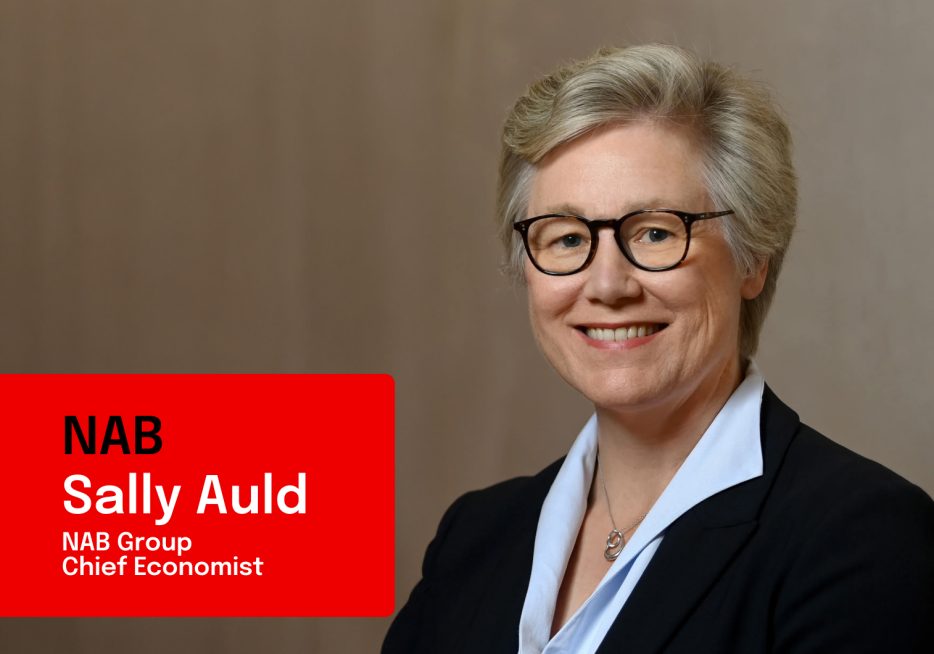We hear from NAB Group Chief Economist, as she shares her latest economic update. Watch now.


With Australia’s constantly evolving population, cultural diversity should be firmly fixed on the radar of every business in this country, according to Lena Belin, founder of intercultural consultancy and training company, Cultura Franca.

With Australia’s constantly evolving population, cultural diversity should be firmly fixed on the radar of every business in this country, according to Lena Belin, founder of intercultural consultancy and training company, Cultura Franca.
“With 45 per cent of Australians born overseas or had parents born overseas, it’s a vital factor,” she says.
Belin’s clients range from large corporations to SMEs, but all have the common aim of wanting to learn how to embed cultural diversity into their business to better meet the needs of their customers and employees.
“Our clients come to us to address a number of business objectives and we look at how cultural diversity strategies can help them achieve those,” says Belin.
She gives the example of one client, a financial services business, that wanted to expand in Australia and saw an opportunity to tap into a new and enormously profitable market by using a specific cultural diversity strategy. The company had become aware of such strategies used successfully by competitors overseas and decided to use the Chinese New Year period to offer special rates and deals to the local Chinese community. A reward system for referrals was also instigated, as well as establishing one ongoing contact person for customers.
“It was an excellent marketing strategy because nobody else was doing it,” says Belin. “They attracted strong attention from the local Chinese community.”
At a practical level, this meant training staff on different communication patterns with Chinese clients, such as how to say ‘no’ politely. It also meant training staff in responding to feedback and complaints from this customer demographic.
“These things are done differently in Chinese culture and require different approaches than those used in an Australian business setting,” explains Belin. “It all goes back to a different understanding of customer service and managing relationships in Chinese communities, where the element of trustworthiness and the building of relationships – or guanxi – comes first before any business interaction.”
The benefits of strong cultural diversity within an organisation extend to both internal functions and external matters, says Belin.
As well as strengthening a company’s standing as an employer of choice, she says the many internal benefits include higher staff retention, improved team performance, more effective management–staff relationships, improved work outcomes where intercultural team work is an issue, higher job satisfaction and a better understanding of diverse customer needs.
At an external level, Belin says that cultural diversity enhances a business’s reputation and plays an important role in product development, marketing and customer service. “It means finding new markets, developing new products and better serving current customers, resulting in higher retention,” she says. “Many customers with ethnic backgrounds are thankful to considerate businesses and this translates into increased customer loyalty.”
Along with the many positive benefits to a business, Belin points out that cultural diversity can lead to misunderstandings and tensions in a workplace, so it’s important for an organisation to have the correct cultural mix and to train managers how to appreciate and respect cultural differences. “You need to understand, for example, why some people from some cultures will not contribute openly in a meeting, yet will say something to the boss personally,” she says.
So how does an organisation plan for cultural diversity? Belin says to look at the current cultural diversity of your workforce, products and customer base then prioritise where more work needs to be done. This can be a complex process that “doesn’t take place overnight”. It can also affect the whole organisation. “Businesses should look at it holistically,” she says, “just like a marketing plan or an OH&S policy.”
Once new markets are identified, research must be conducted. Issues such as buyer behaviour, demographic factors, cultural values, product expectations, customer service expectations and communication styles must be clearly understood.
With this research in place, planning can begin to determine what the organisation needs, internally in terms of staff and skills and externally in terms of product offerings, customer service, marketing methods and so on. This process leads to better and more customised services that, in turn, generate higher levels of customer retention, referrals and, ultimately, profitability.
Whatever the type or size of a business, Belin stresses that cultural diversity must be an ongoing process within the organisation. She points to IBM, which has had a strong cultural diversity philosophy in place since the early 1950s and now has a diversity council, diversity contact officers and diversity ‘champions’ within the organisation. Regular employee opinion surveys have reinforced IBM’s view that embracing and valuing cultural diversity is one of the organisation’s greatest strengths, enabling it to bring together the best talent and ideas to solve clients’ problems.
“For any organisation, big or small, cultural diversity must be constantly reviewed,” says Belin. “You need to set performance indicators and link them to the performance of individuals. And the research of the culture must be constantly updated to really understand what’s behind your customers’ behaviour.”
More from NAB:
© National Australia Bank Limited. ABN 12 004 044 937 AFSL and Australian Credit Licence 230686.